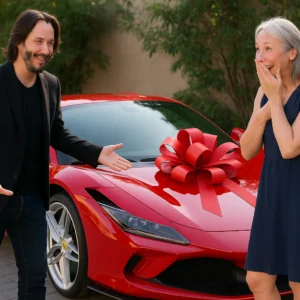Amazon’s The Boys is an often brutal parody of the superhero genre, and some of its main superheroes are inspired by DC and Marvel’s finest.
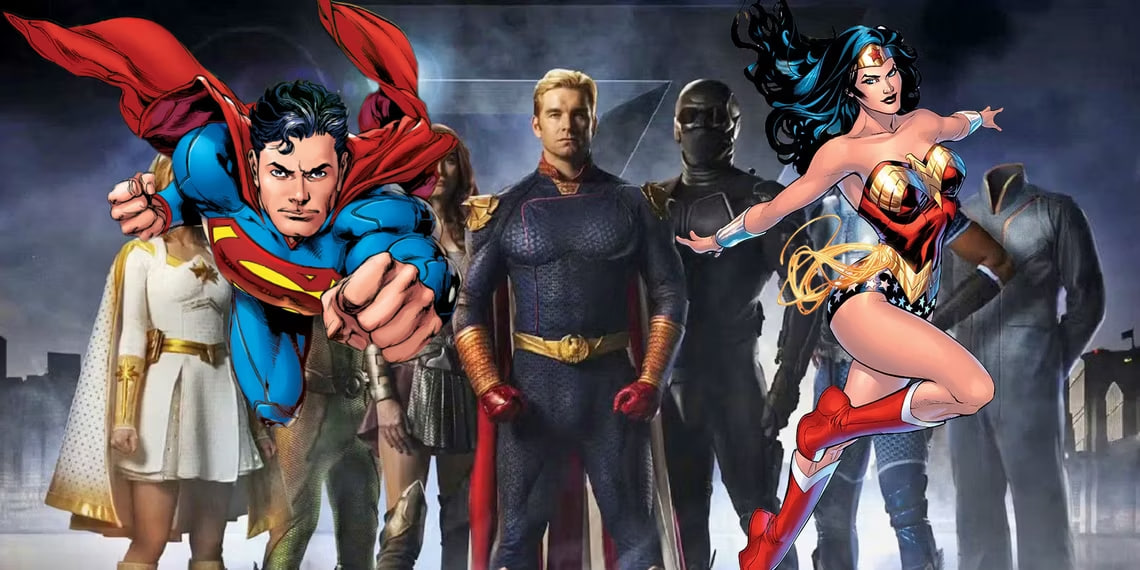
The Boys stands as a phenomenal dark superhero show in its own right, but part of its charm is also that it is a parody of Marvel and DC superheroes gone bad. In the original comic book series by Garth Ennis and Darick Robertson,The Boys served as a bloody and grossly satirical take on the superhero genre, subverting long-established tropes and toying with readers’ expectations. However, the story also took direct shots at the giants of the comic book world, Marvel and DC. Many of the biggest, most outrageous superheroes in The Boys are parodies of the comic book world’s biggest names.
Amazon’s The Boys follows suit and takes the satirical elements to a new level, ripping on a host of big-name figures from the genre’s more family-friendly output. The series is so popular that it gained a spin-off, Gen V, which takes place at Godolkin University School of Crimefighting, where young supes learn to control their powers. The Boys parody DC the most, particularly in the comic books, but Marvel doesn’t escape unscathed. With that said, most of The Boys parodies are done with a wry smile and a knowing wink, rather than any outright malice, and continue into the spin-off series, Gen V.
Homelander
Superman (DC)/Captain America (Marvel)
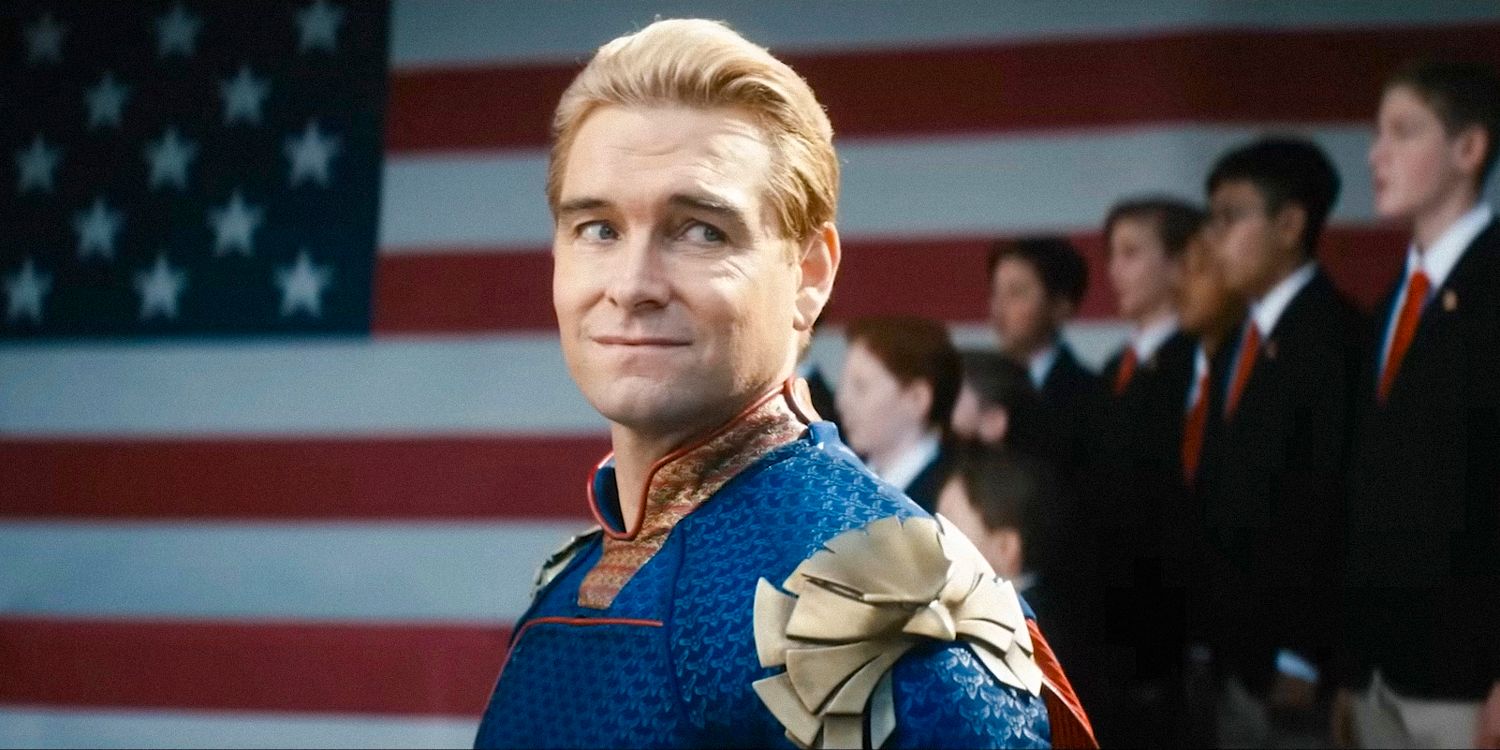
America’s favorite Kryptonian is undoubtedly the biggest inspiration behind Homelander. Superman is arguably the most widely-recognized superhero across the globe, and most superhero universes have their own equivalent to act as a ceiling when it comes to power-levels (for example, Omniman in Invincible). DC Comics have toyed with the idea of an evil Superman in storylines like Injustice and Red Son, but no alternate version of Clark Kent comes close to the twisted sadism Homelander represents.
The Boys plays on the DC icon’s God-like status in glorious fashion, giving the leader of the Seven all of Clark Kent’s best powers and abilities including flight, heat vision, and even X-ray vision — an ability The Boys naturally twists into something more sinister. However, there are also elements of Marvel’s Captain America thrown into the mix. Visually, Homelander incorporates Cap’s Stars and Stripes motif and his overt exploitation of patriotism reaches levels Superman could never achieve with his Kryptonian heritage.
The Deep
Aquaman (DC)/Namor (Marvel)
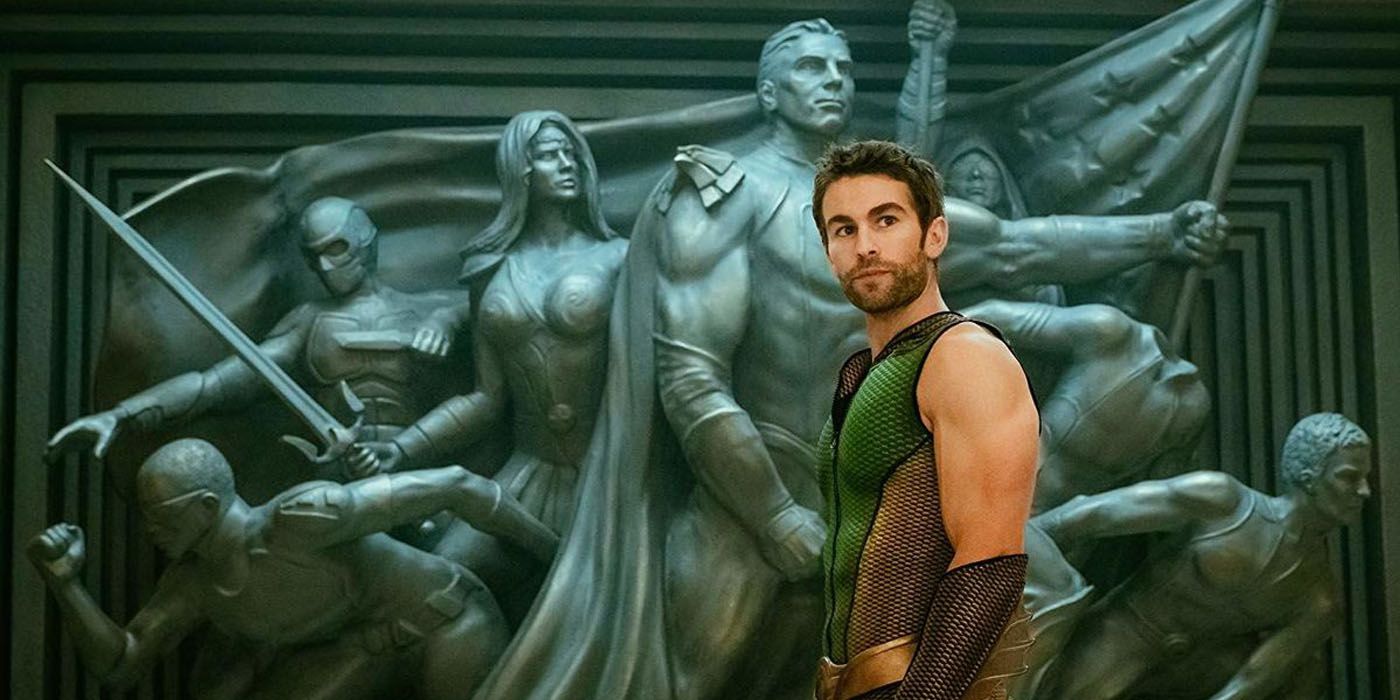
DC’s Aquaman and Marvel’s Namor have often been derided as on the silly side as far as superheroes go (at least by fans who only have a casual understanding of the respective characters), but The Boys takes things a step further when it comes to aquatic heroes who can talk to sealife. One of the most direct parodies in The Boys is Chase Crawford’s The Deep, a clear riff on DC’s Aquaman. The Boys take a grim look at the darker side of Aquaman’s fish communication powers and show how aquatic anatomy could be a problem.
The series also plays on the idea that Aquaman has always been derided by comic fans for his looks and relatively odd powers. This was before Jason Momoa gave Aquaman’s reputation a much-needed boost. The Deep is seen attending therapy sessions to discuss his inferiority complex — something Aquaman would’ve no doubt also done had he been aware of his status as a figure of ridicule. While the parody is less obvious, there are also clear parallels to Marvel’s Namor, another underwater hero who talks to fish.
Queen Maeve
Wonder Woman (DC)
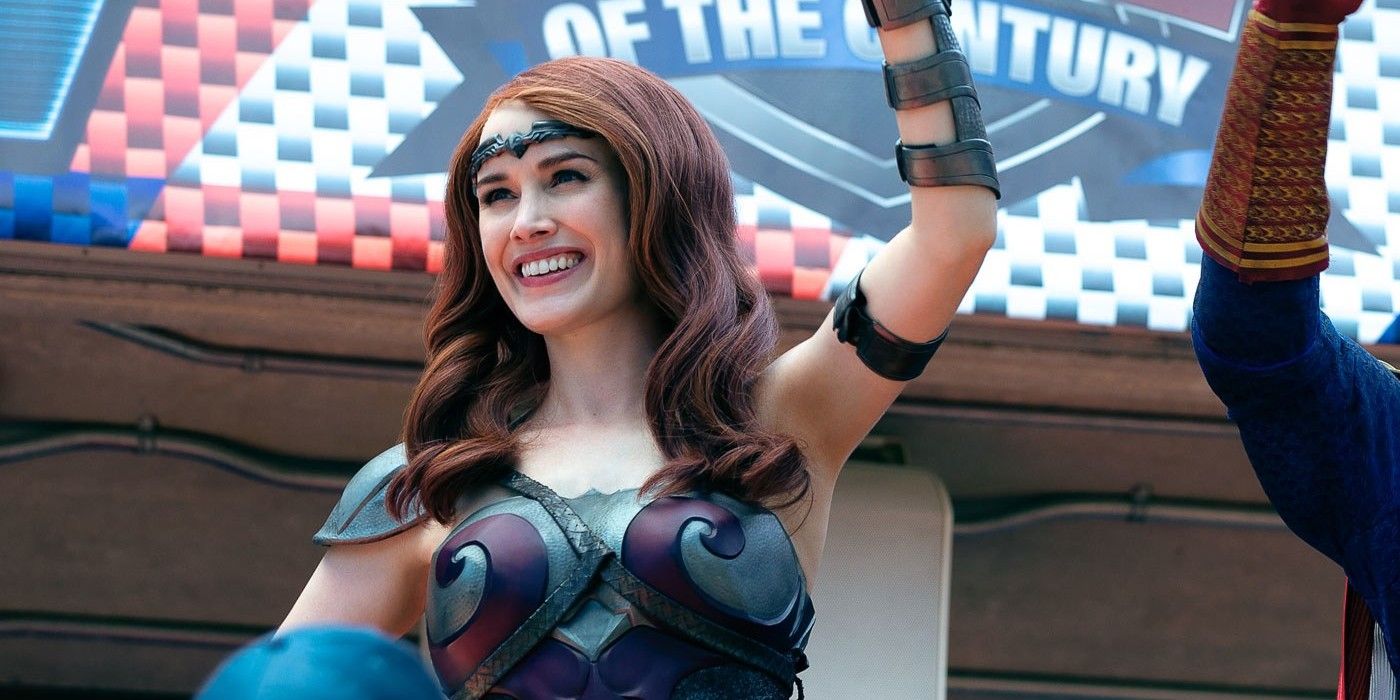
Another clear parallel can be found between Queen Maeve and the female third of DC’s holy trinity, Wonder Woman. Both characters have origins steeped in ancient mythology, with the DC character deriving from Greek lore and Maeve named after a warrior from Irish legend. Highlighting their mythical natures, both characters wear stylized metallic suits of armor with a matching sword, although Maeve’s weapon wouldn’t come close to matching Diana’s in a fight.
Like Wonder Woman, Maeve is also one of the more ethical members of the Seven, acting as a moral compass compared to the debauchery of the other members. There’s something of a meta-commentary when it comes to the similarities between Maeve and Wonder Woman too. Maeve’s sexual orientation becomes a talking point on the news cycle in The Boys, as do her struggles with addiction. This is a clear mirror being held up to certain toxic corners of the real-world superhero fandom, who often unncessarily sexualize and critique female superheroes.
Black Noir
Batman (DC)
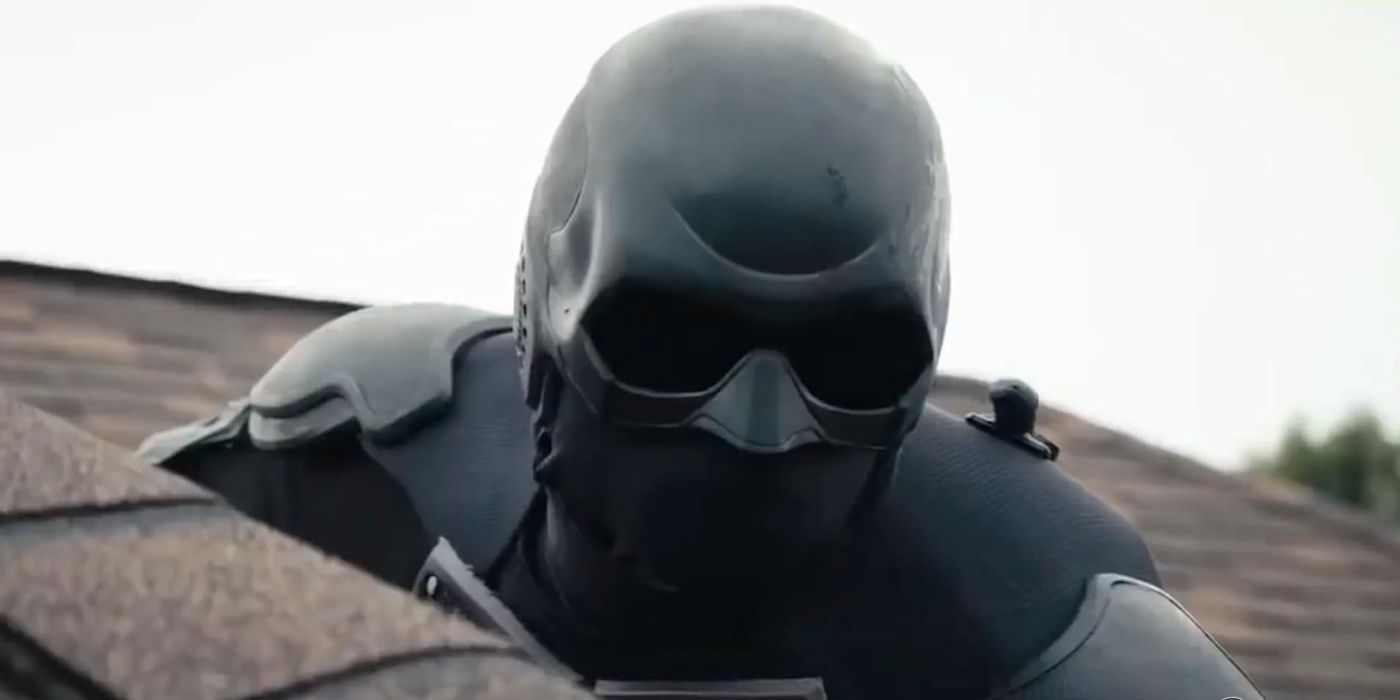
While his story in the comics showed he was not really much like Batman at all, Black Noir in The Boys is clearly supposed to be the Batman to Homelander’s Superman. While Homelander is the face of America for the team, Black Noir stays in the shadows. He gets his hands dirty a little more often than Homelander when it comes to the public eye, and he has a similar fighting ability to the Caped Crusader.
It also appears that the Amazon Prime series will not use the same story that the comics did, so it keeps Black Noir closer to Batman than the source material. The Boys season 3 took the similarities between Batman and Black Noir further too, as it directly showed that Black Noir struggled with existing in Soldier Boy’s shadow. It added tragic elements to Black Noir’s backstory, as well as revealed that he’s quite possibly insane due to his trauma — an observation that’s often leveled at Batman.
Starlight
Stargirl (DC)/Northstar & Aurora (Marvel)
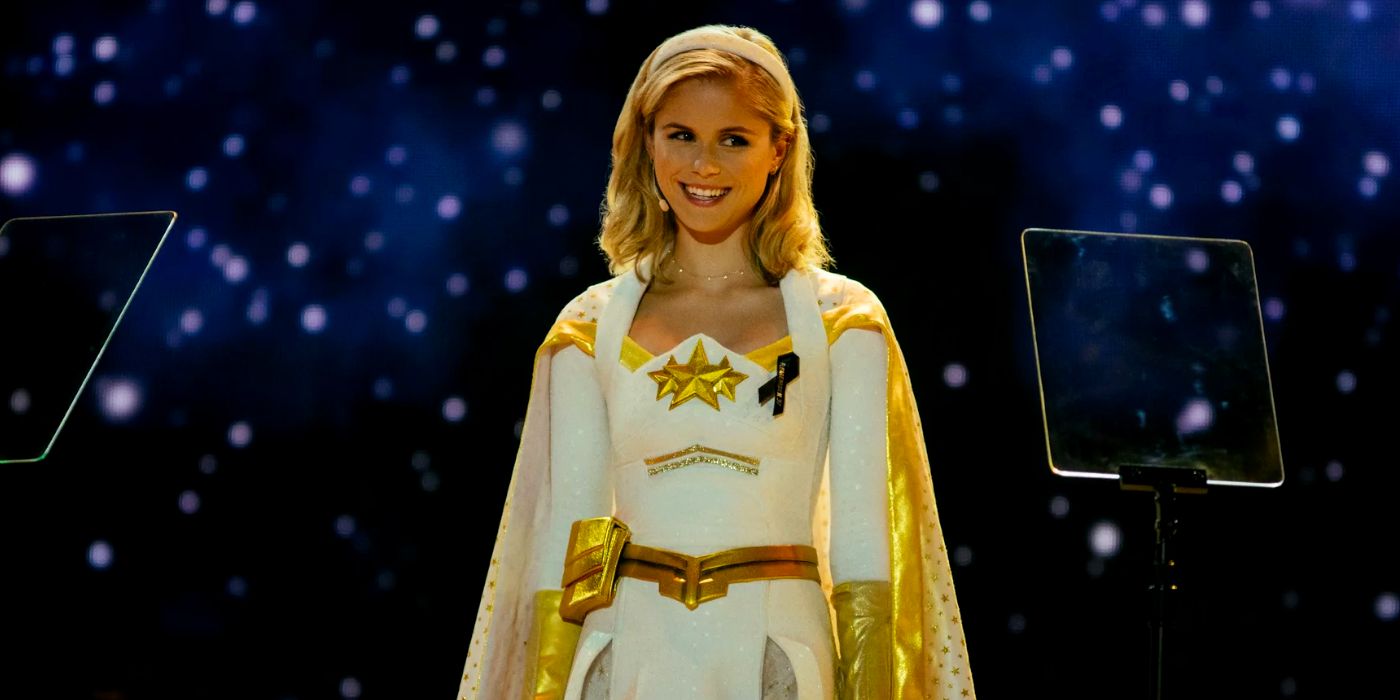
Starlight is one of the central characters of The Boys, but her superhero parody is less obvious for casual viewers — she’s loosely based on the DC character Stargirl, who had her own TV series on The CW. Starlight and Stargirl have different superpowers, with the latter wielding a staff to manipulate energy, while also being able to fly and shoot stars. Starlight, on the other hand, generates intense rays of light from her body, similar to Northstar and Aurora from Marvel Comics.
The design and concept of Stargirl seem to heavily inform Starlight in The Boys. Both are Apple Pie American role models and the more innocent faces of their respective superhero teams. Physically, the two heroes share a close resemblance, and Stargirl is known for being somewhat relaxed about revealing her true identity — something The Boys references with Starlight.
Translucent
Emma Frost (Marvel)/Martian Manhunter (DC)
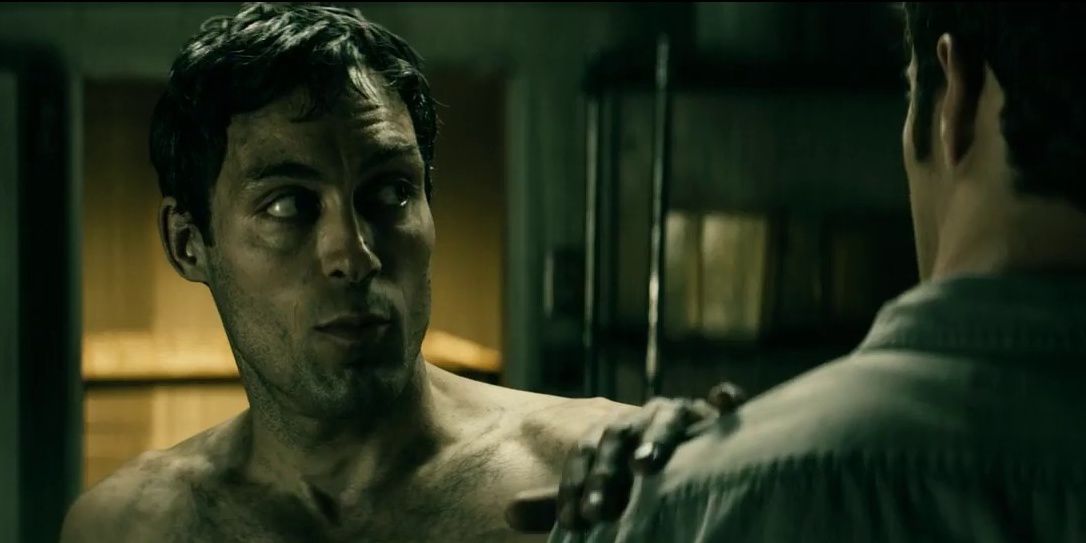
Translucent may have died incredibly early on in The Boys, but as one of the members of The Seven with the power of invisibility he’s a clear parody of several well known characters from DC and Marvel. While the most obvious comparison is The Invisible Woman from the Fantastic Four, the nature of Translucent’s powers are actually quite specific to some key Marvel and DC characters.
Any number of superheroes from both the DC and Marvel rosters have been able to turn invisible, but Translucent’s carbon-based skin is far more unique, perhaps most commonly associated with Emma Frost from X-Men. Predominantly a psychic, Frost can turn her skin into a carbon-based impenetrable exterior, much like Translucent. Furthermore, Translucent’s comic equivalent in Ennis and Robertson’s The Boys is a character called Jack From Jupiter – a not-so-subtle nod to DC’s Martian Manhunter who, incidentally, could also turn invisible.
Popclaw
X-23 (Marvel)
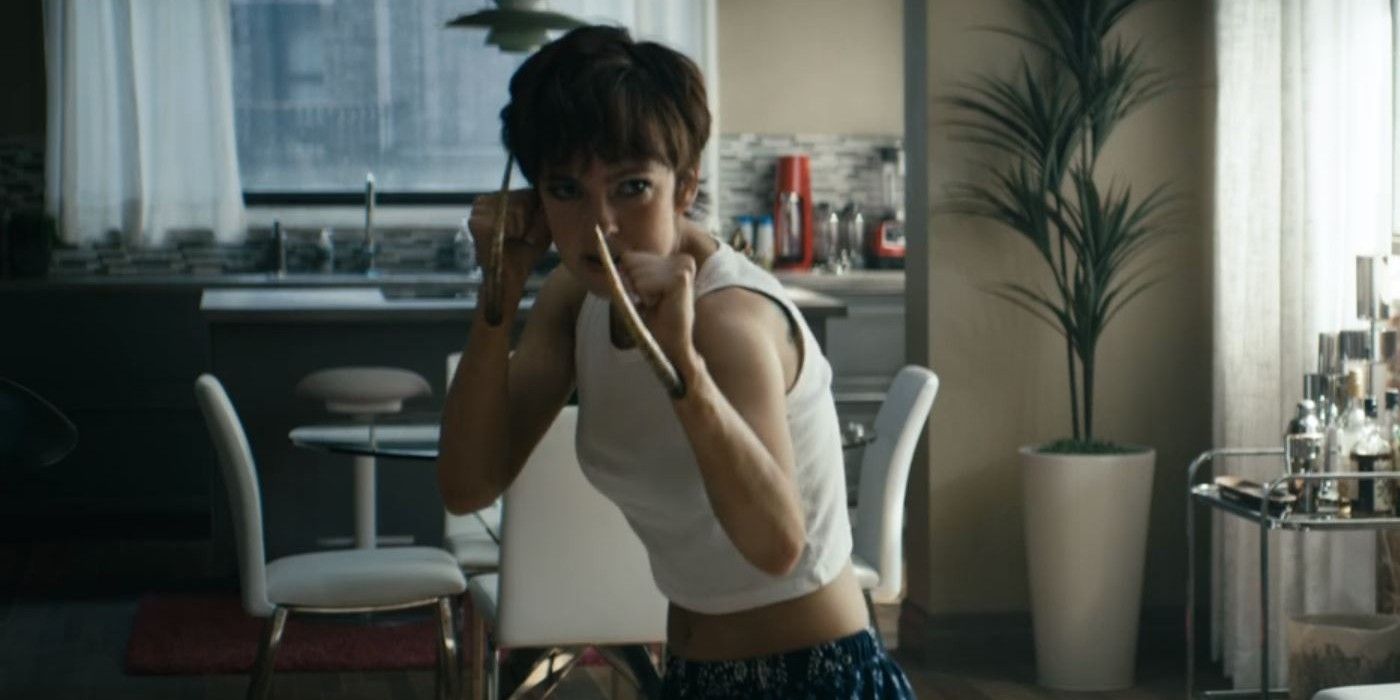
Like Translucent, Popclaw was a character on The Boys who wasn’t as prevalent as the likes of Homelander or The Deep, but thanks to the graphic nature of her scenes in the first season she was incredibly memorable. Like her name suggests, Popclaw has retractable claws, powers that any fans of Marvel’s X-Men franchise will instantly recognize.
Perhaps equally indebted to Wolverine, Popclaw’s ability to grow claws through her skin to use as weapons is a trick straight from the X-Men canon. Logan was famous for drawing three prongs through his knuckles, X-23 cut that down to two, and now Popclaw is reduced to one single protrusion from each limb. However, the concept itself is unique enough to trace directly back to Marvel. Since Popclaw is female and younger, she can perhaps be more readily compared to X-23 than Wolverine himself.
Kimiko
Wolverine (Marvel)
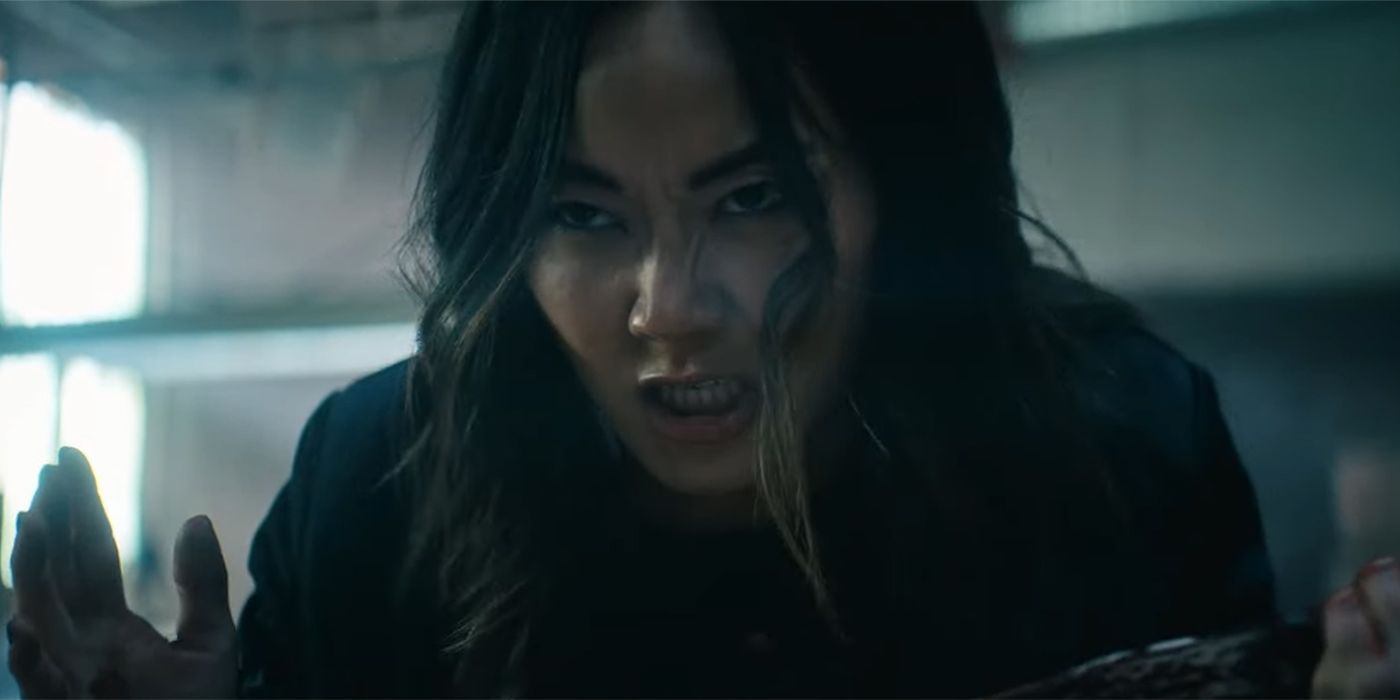
While Popclaw has similarities in powers to Wolverine and X-23, Kimiko’s powers are a little different in her comparison to the Marvel Comics icons. However, despite the fact she has no claws, Kimiko is incredibly similar to Wolverine, and her backstory, fighting style, and temperament are all clear nods to Logan.
Kimiko is almost feral at times and only remains under control when working with certain people. She also has a mysterious past that ended up as a puzzle that played out in The Boys. This bears a strong similarity to Wolverine, both in them slipping into their feral states and also their mysterious past and the danger they possess as a result. Kimiko is also willing to hurt people really badly in a fight, something Wolverine has done his entire career as a superhero.
Nubian Prince
Black Panther (Marvel)
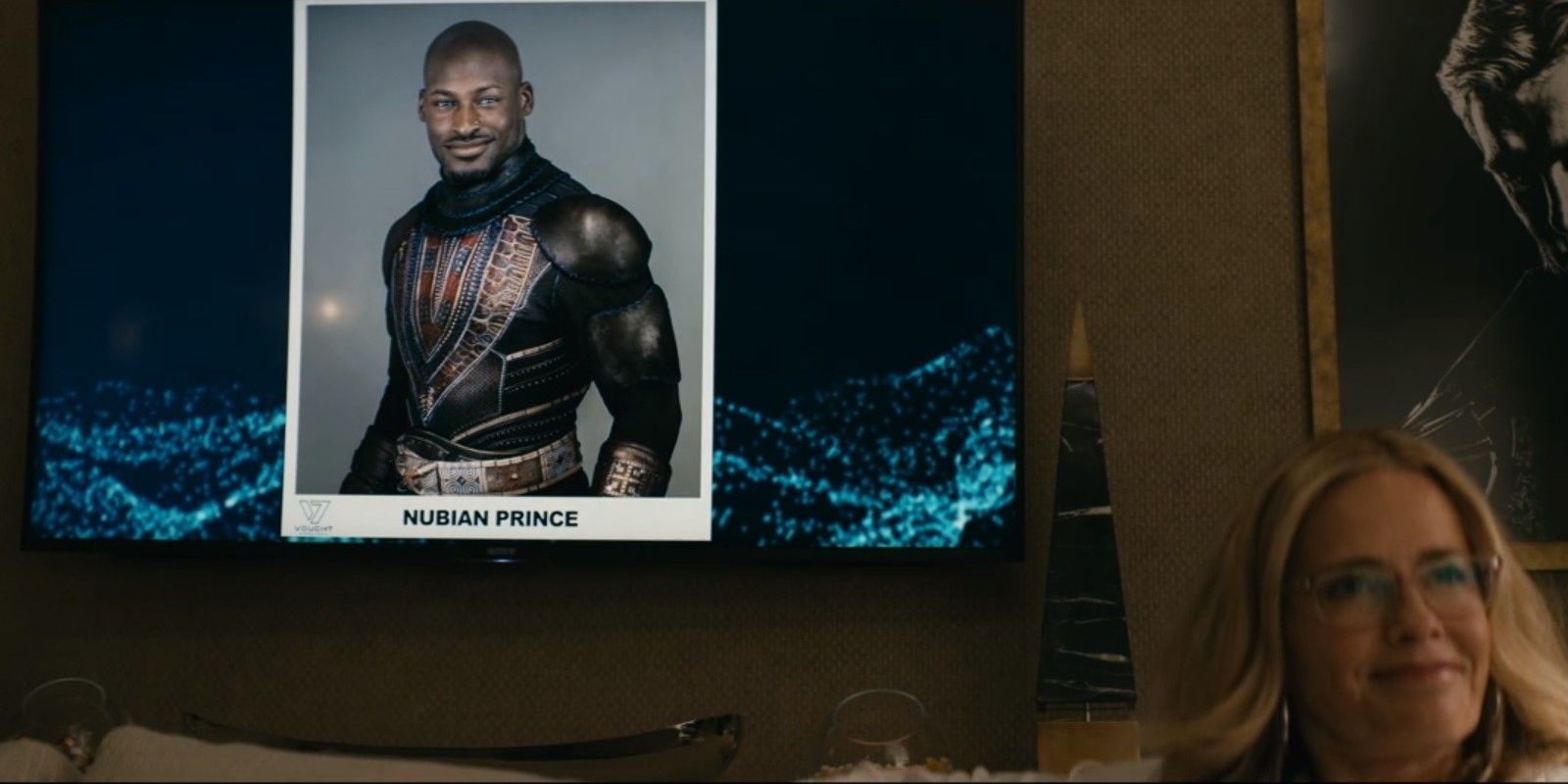
Nubian Prince didn’t feature much in The Boys, though it’s clear who the briefly-mentioned character was a parody of — Marvel Comics’ Black Panther. Just as Black Panther is introduced as the prince of Africa’s fictional state of Wakanda, Nubian Prince is named as the heir to the African region of Nubia (which is not fictional). Furthering the connection, both characters wear sleek black superhero outfits adorned with traditional African design elements.
Much like Queen Maeve, there’s also an element of meta-commentary to Nubian Prince, parodying not just the character of Black Panther but some of the cynical views of him from within the real-life Marvel Comics fanbase. Madelyn Stillwell also cynically describes Nubian Prince as “not too militant, Caucasians love him too,” which could be interpreted as a subtle commentary on the distinct lack of superhero movies starring a Black lead character.
A-Train
The Flash (DC)/Quicksilver (Marvel)
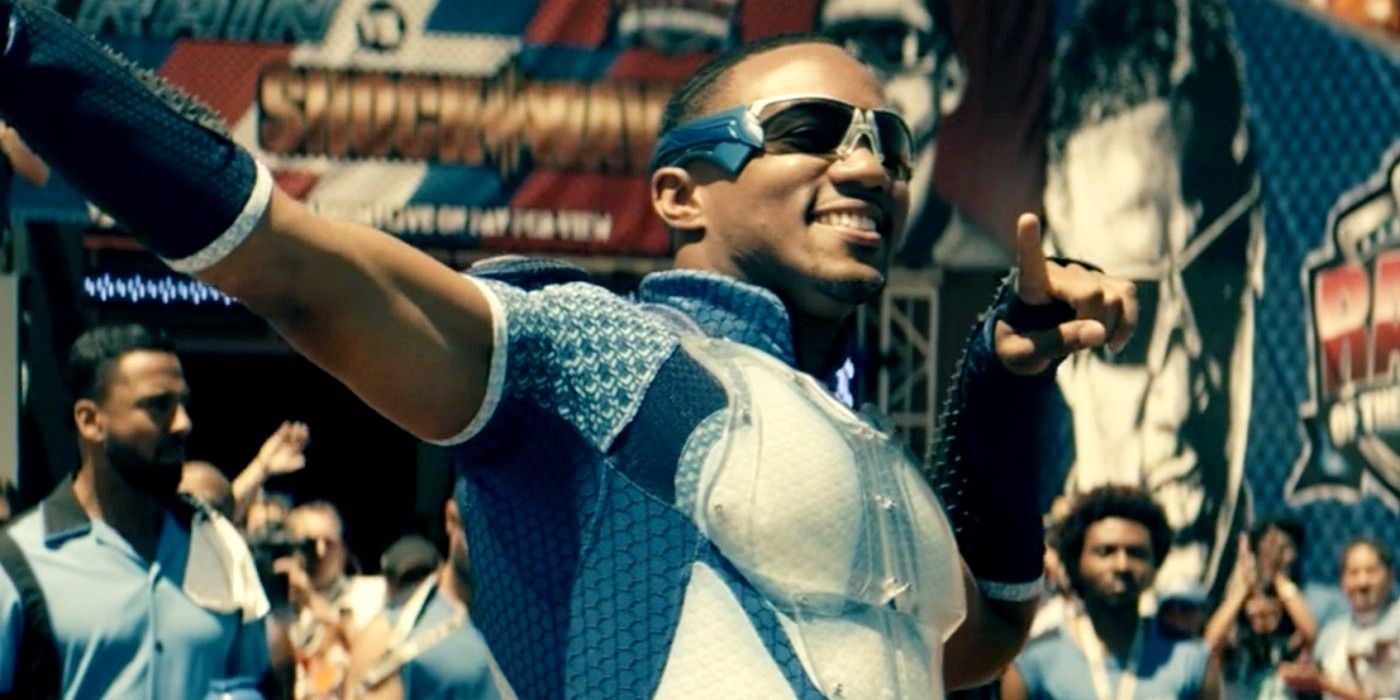
“Speedsters” are such a common occurence in any superpowered universe that The Boys even parodied their prevalence, with one of the key season 1 moments being a race between two superfast supes to determine which could officially hold the title of Faster Man Alice. In the comic version of The Boys, A-Train and the Flash have more in common than just super speed, with A-Train’s brash arrogance and exuberant personality acting as an exaggerated caricature of his DC counterpart.
This influence is less apparent in the Amazon version of The Boys, where A-Train is a more conflicted character, concerned about his relevance in the Seven and paranoid that his drug-running side business will be unearthed. Still, the death of Robin is a shining example of what horrors could occur if Flash was really zipping across the world in a blur of red spandex.
Blindspot
Daredevil (Marvel)
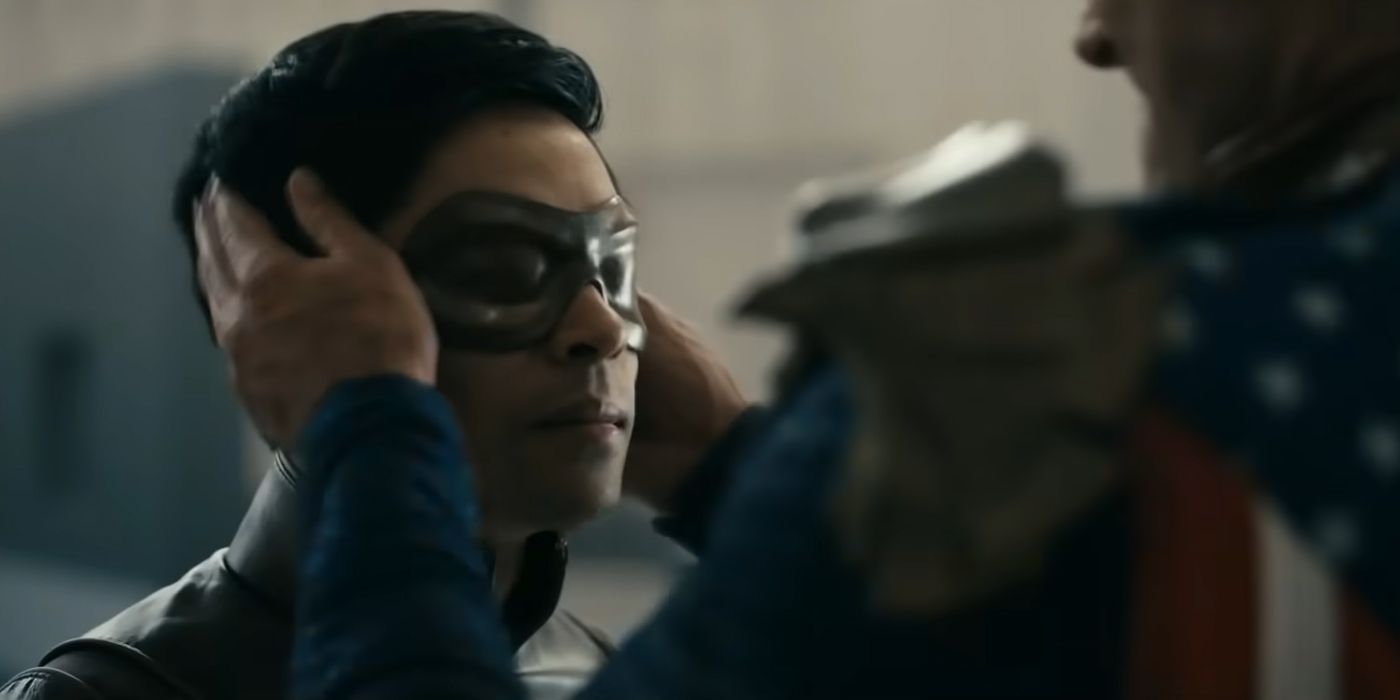
Another character in The Boys who only had a brief appearance but was an instantly recognizable parody of a Marvel character is Blindspot, one of the candidates hoping to gain a spot in The Seven. While Blindspot only appeared in a single scene, it’s one that’s incredibly difficult to forgeter. It’s hard to rank the atrocities committed throughout The Boys’ three seasons so far, but the interaction that Homelander has with Blindspot would likely earn a top spot.
Blindspot is a pretty direct translation of Marvel’s Daredevil, as he’s an expert fighter/martial artist who is blind but has other super-powered senses that more than compensate. The character only appears in The Boys season 2 briefly, mainly to provide yet another example of Homelander’s unparalleled bigotry and cruelty. After pretending to be impressed with Blindspot, Homelander deafens him with an aggressive blow to both ears.
Ezekiel
Plastic Man (DC)/Mr Fantastic (Marvel)
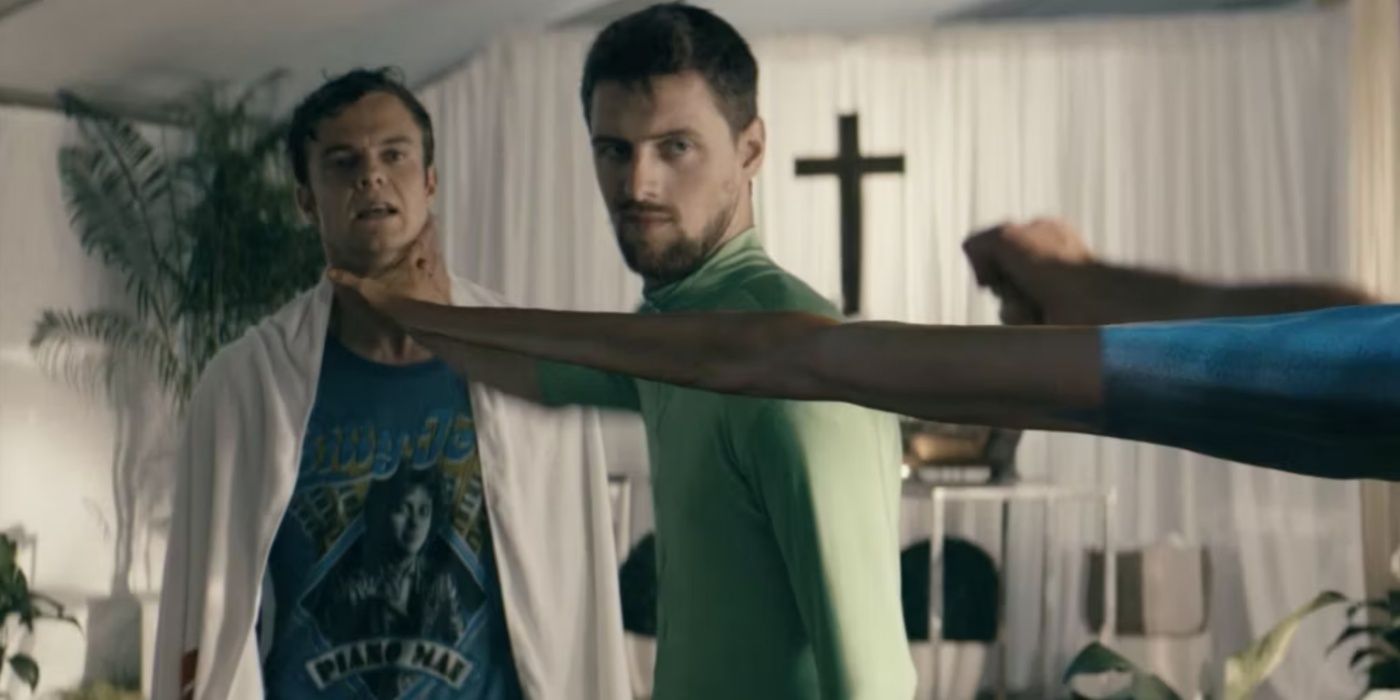
Both Marvel and DC Comics have stretchy superheroes who can morph and extend their body at will, and The Boys has their own spin on the powerset too. However, as with many characters in the dark superhero parody, The Boys version has a mind as twisted as he can make his body. Ezekiel was one of the smaller antagonists in the first season of The Boys. He is a Christian supe and the main organizer of the Capes for Christ group. However, while he promotes Christianity, as well as traditionalist values, he is secretly in the closet himself.
As for his powers, he has elasticity abilities. He can stretch, twist, and contort his body into extraordinary lengths and proportions. Ezekiel is similar to Reed Richards in Marvel Comics but is more likely more comparable to DC’s Plastic Man, as he often can compress his body into a compact form while also increasing and decreasing it as needed.
Eagle the Archer
Green Arrow (DC)/Hawkeye (Marvel)
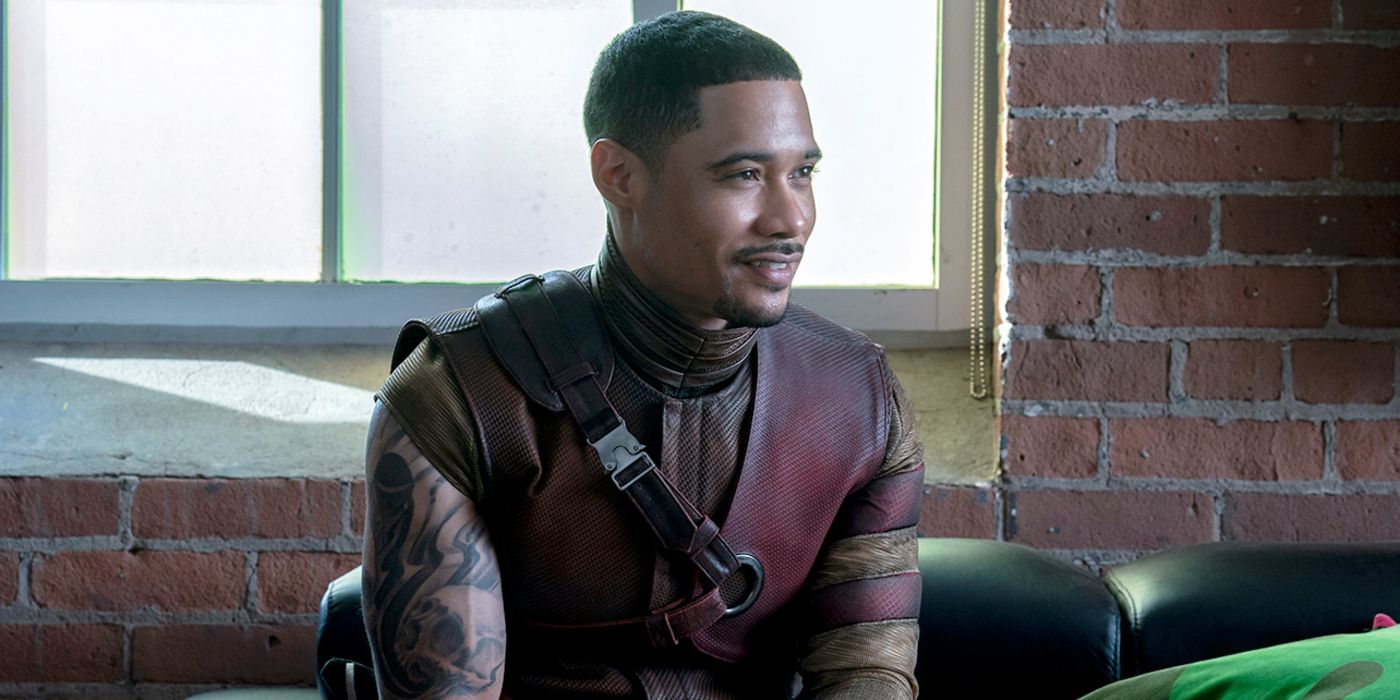
Eagle the Archer showed up in The Boys season 2 as a Supe who saves The Deep and then attempts to get him to join the Church of the Collective, where they promise that they can help him. However, he leaves the church when he wouldn’t shut his mother out of his life, and they excommunicate him, similar to the real-life Church of Scientology controversies. As for his powers, he has enhanced accuracy and enhanced sight.
He is also one of the better Supes, someone who really wants to help people. This puts him as The Boys parody of Hawkeye, or more accurately, Green Arrow. Where the characters differ is that Eagle the Archer actually has superpowers. His archery skills are enhanced by Compound V, so he can wield a bow far better than a normal human. Hawkeye and Green Arrow, on the other hand, have no superhuman abilities to speak of — they’re just really good at archery.
Doppelganger
Mystique (Marvel)
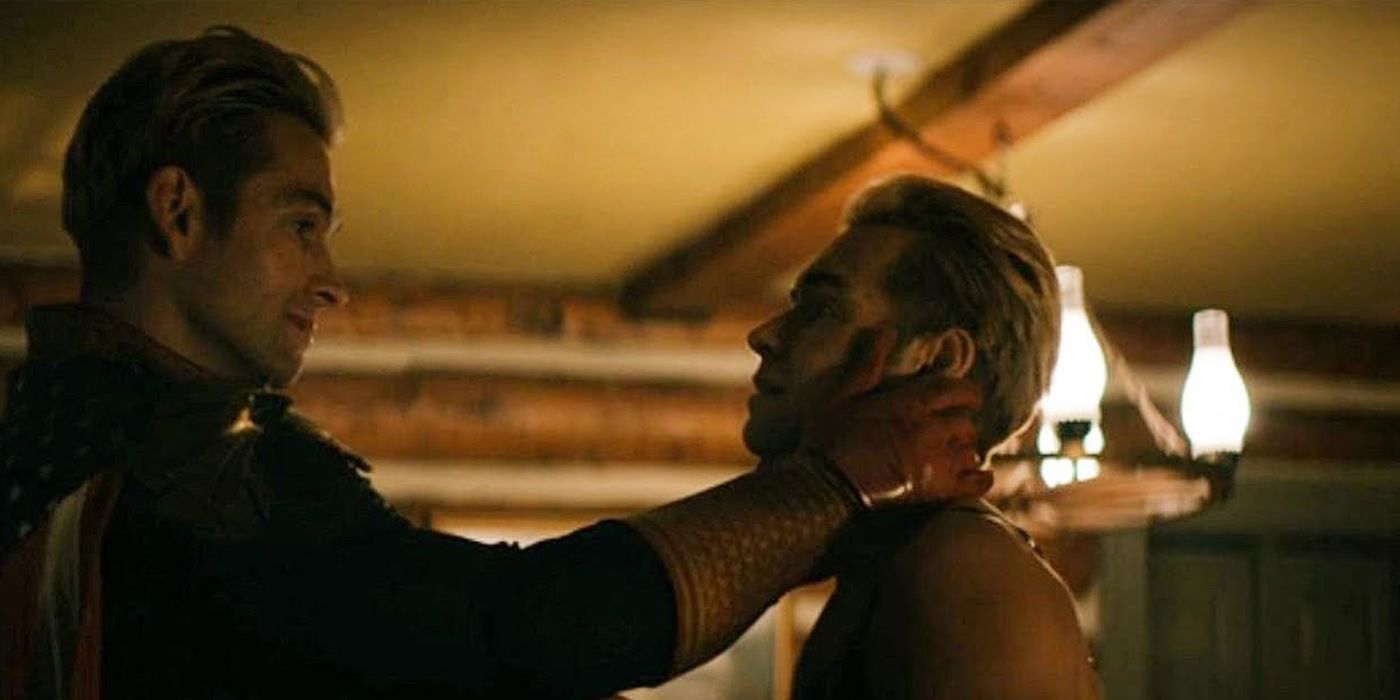
Doppelganger is a Supe who has the ability to take on the appearance of anyone. The first time that Doppelganger is seen in The Boys, Madelyn Stillwell hired them to pose as an attractive woman and sleep with a Senator, so they could blackmail him. Even more disturbing, Doppelganger began to appear as Madelyn after her death to sexually please Homelander.
It is clear that Doppelganger is The Boys parody of Mystique from The X-Men movies and comic books. She appeared in the movies to impersonate and blackmail government officials and even tried to please Wolverine by taking Jean Grey’s form at one time. There are many shape-shifting heroes and villains throughout Marvel and DC comics, such as Morph in the X-Men or DC’s Martian Manhunter. However, as Mystique is arguably the most widely recognized, it’s likely that she’s the name that springs to viewer’s minds when it comes to this particular The Boys parody.
Soldier Boy
Captain America (Marvel)
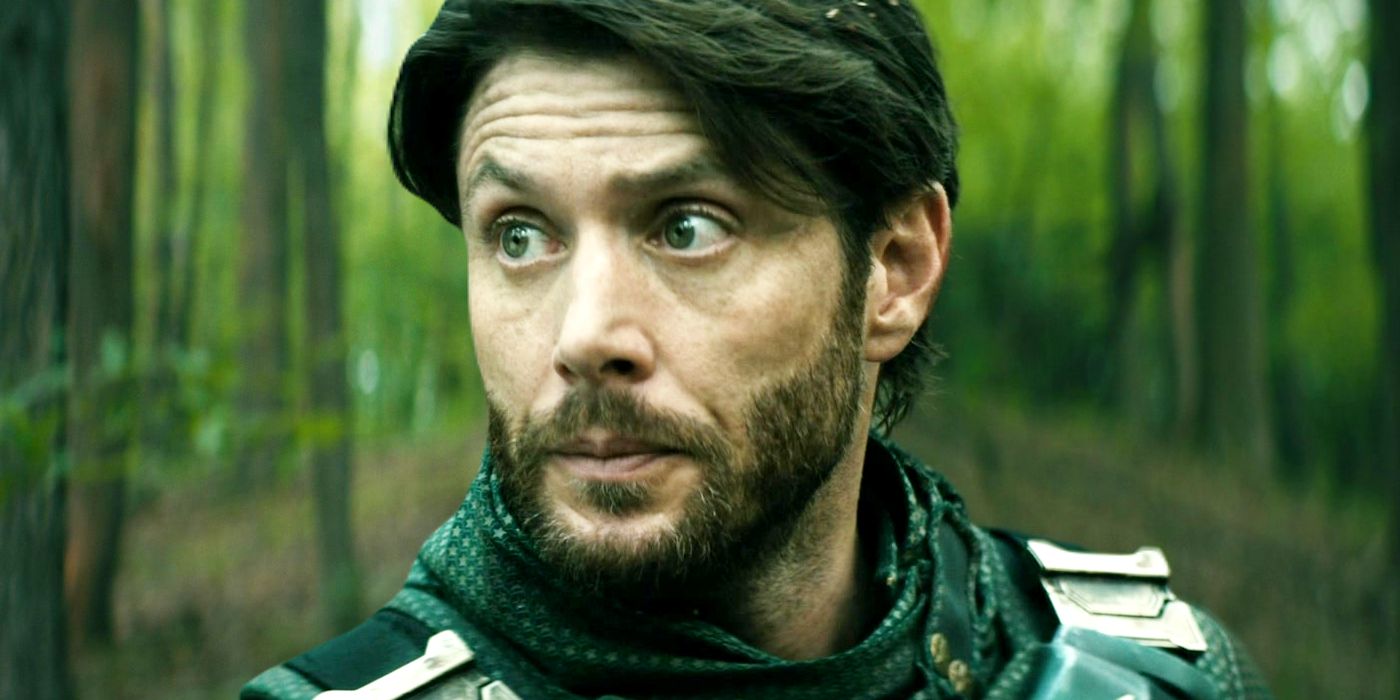
Homelander’s costume design and aggressive patriotism may take some inspiration from Marvel’s Captain America, but The Boys‘ most direct parody of Steve Rogers is Soldier Boy, who debuted in The Boys season 3. The comparisons between Soldier Boy and Captain America aren’t just their aesthetic, either. Both served in WW2, for example, although it was later revealed that Soldier Boy’s participation was a publicity stunt from Vought. They also both spent several decades in stasis and find the modern world perplexing.
Played by Jensen Ackles, this Soldier Boy was very different from the one from The Boys comics. Much like Captain America, Soldier Boy was a super-soldier who fought in WWII whose powers included superhuman strength and speed, enhanced fighting ability, and the skilled use of a shield. In the comics, Soldier Boy is portrayed as being very naive and insecure, but he is very powerful in the series.
Andre Anderson
Magneto (Marvel)
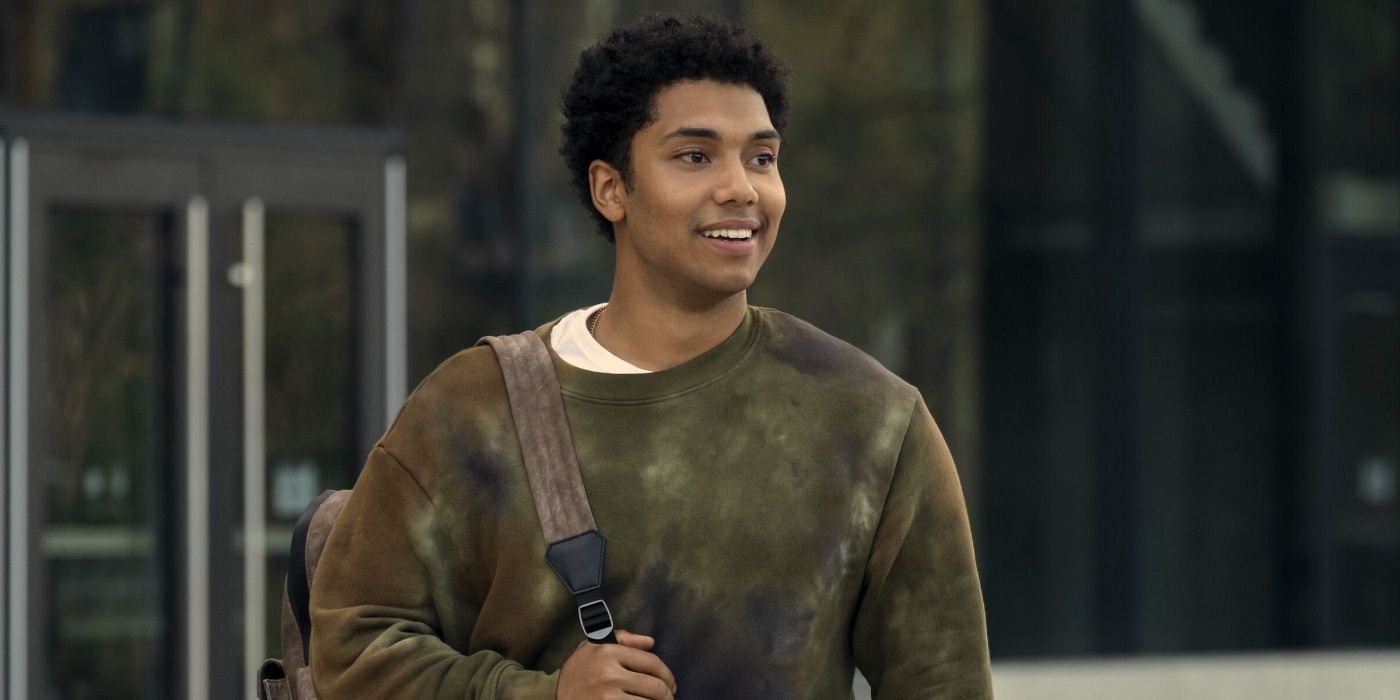
In the more coming-of-age style Gen V, the supes featured in the show are frequently parodies of characters in The X-Men, as Godolkin University is The Boys’ twisted equivalent of Charles Xavier’s school. One of the students, Andre Anderson (played by the late Chance Perdomo), takes his powers from Magneto, although he shares none of the villain’s personality traits.
Magneto’s ability to bend and manipulate metal at will is one of the most iconic powers in the entire X-Men franchise, so it’s understandable The Boys would include its own version sooner or later. Andre Anderson has Magnetism Manipulation powers, just like Magneto from The X-Men — he can control magnetic fields and magnetism with his hands, and can even reshape metal entirely. Of course, his backstory is very different to Magneto’s, but his powers are a clear parody.
Golden Boy
Human Torch (Marvel)
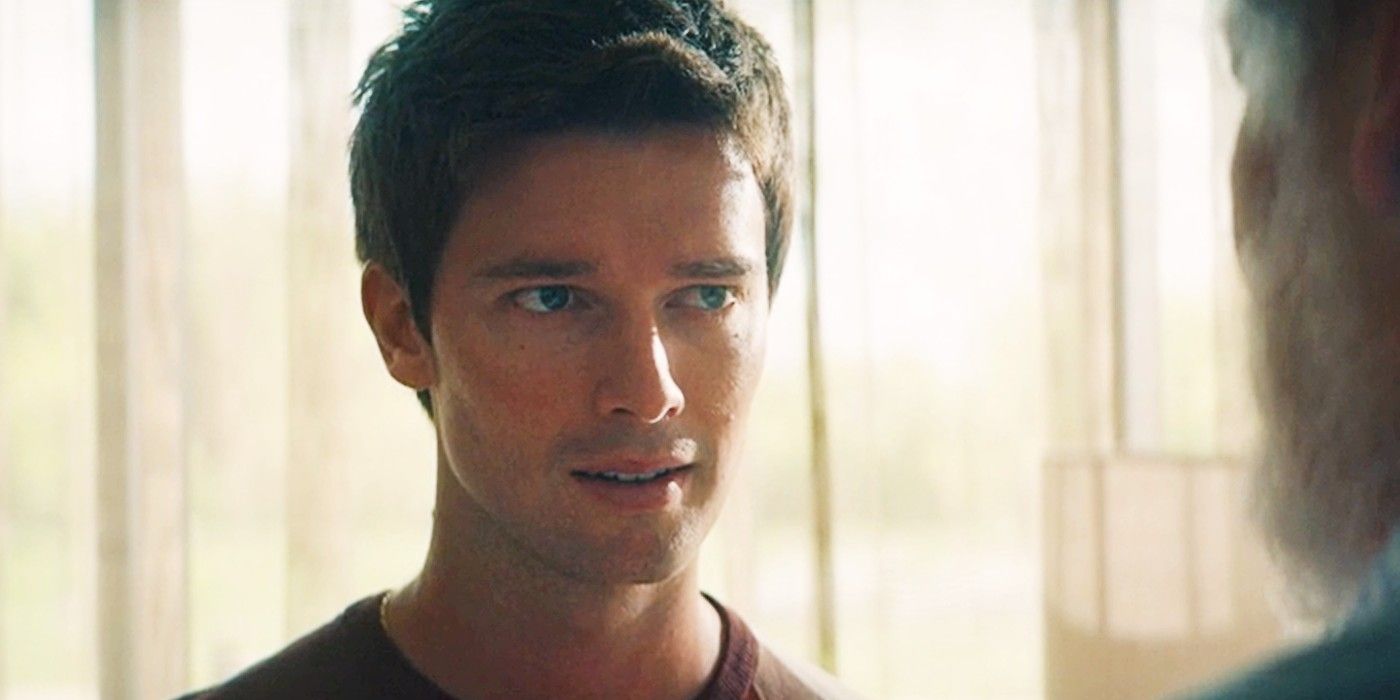
The face of Godolkin University in Gen V was Golden Boy — until he died at the start of the series. He had the looks and charisma that Vought looked for in the face of its school, and they really pushed him into it, grooming him for a future position in The Seven. Like many characters in Gen V, Golden Boy was another The Boys parody, as his powers are very similar to The Human Torch of The Fantastic Four.
Golden Boy had Thermonuclear Powers and could engulf himself in a fiery aura and produce fire. Also, just like Johnny Storm, he was a good-looking hero and someone who had no problem becoming the face of the school and seemed to relish being in the limelight. Sadly, he died trying to save his brother and his death was the catalyst of the entire Gen V series.
Sam Riordan
Superboy (DC)
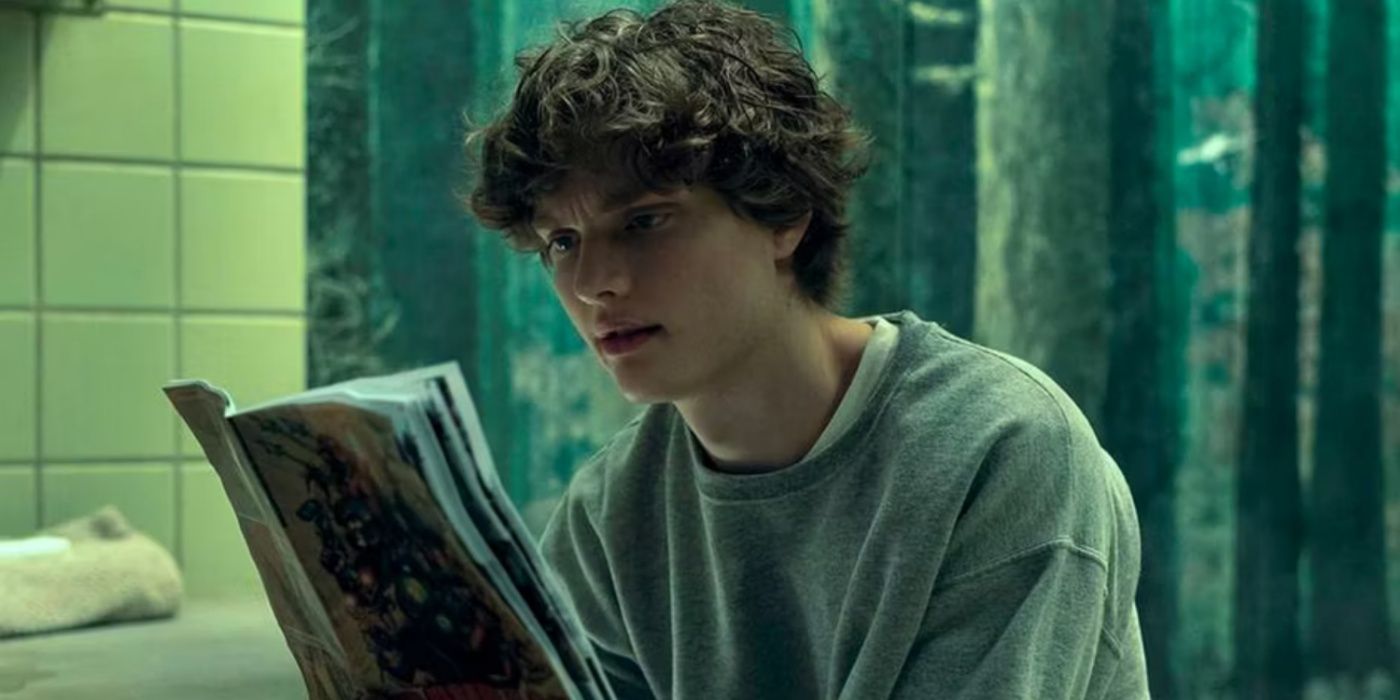
Not all the teenage heroes from Gen V have DC and Marvel counterparts. An example is Marie Moreau, who can control and manipulate blood, something new and fresh in The Boys universe. When it comes to Sam Riordan, the younger brother of Golden Boy, his powers are a little more basic. He has superhuman strength and superhuman durability.
However, Sam’s powers are on a massive level, something that he struggles with. He can kill someone by just punching them and can send superpowered people flying with one as well. He can also leap long distances, and it’s entirely possible that he could even give the mighty Homelander a hard time if the two ever came to blows. While he doesn’t have Homelander’s other powers, he matches up well in pure strength. Due to his backstory, with Vought trying to keep him under control and experiment on him, it’s clear that he’s a The Boys character of Superboy.
Vought American
The MCU
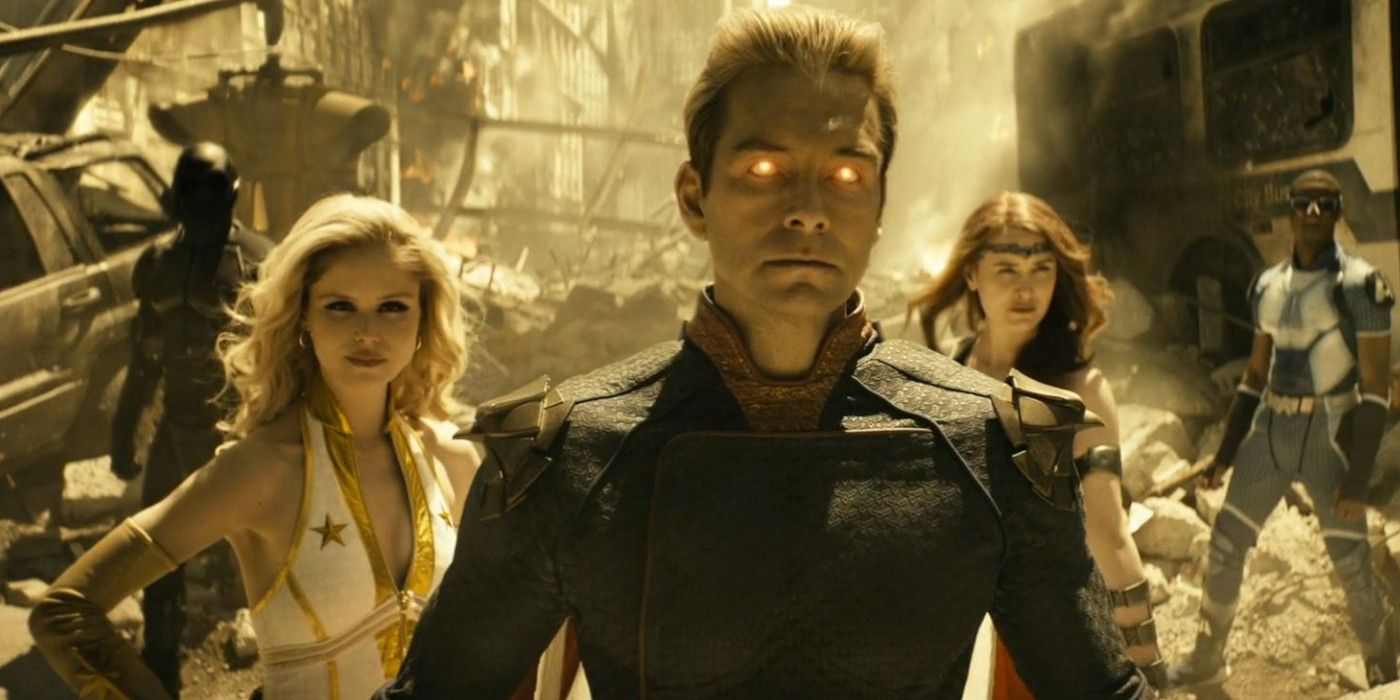
It’s not only DC and Marvel characters that The Boys spends its time parodying. As well as using supes to make meta-comments on the state of the more toxic corners of the superhero fandom, the show also takes shots at both Marvel and DC Comics as institutions. While the way supers are created and managed is an obvious parody of how decisions are made when cooking up storylines and characters for comic books, The Boys draws several comparisons between Vought and the modern Marvel Studios machine.
A cameo from Seth Rogen reveals that the company has their own VCU — the Vought Cinematic Universe. One company executive also utters the line “everybody loves a team up,” openly lampooning Marvel’s crossover releases such as Avengers and Captain America: Civil War. There are even references to Vought opening theme parks outside of Paris (Disneyland Paris) and releasing the billion-dollar-grossing G-Men: World War — a mashup of X-Men and Civil War.
The Seven
The Justice League
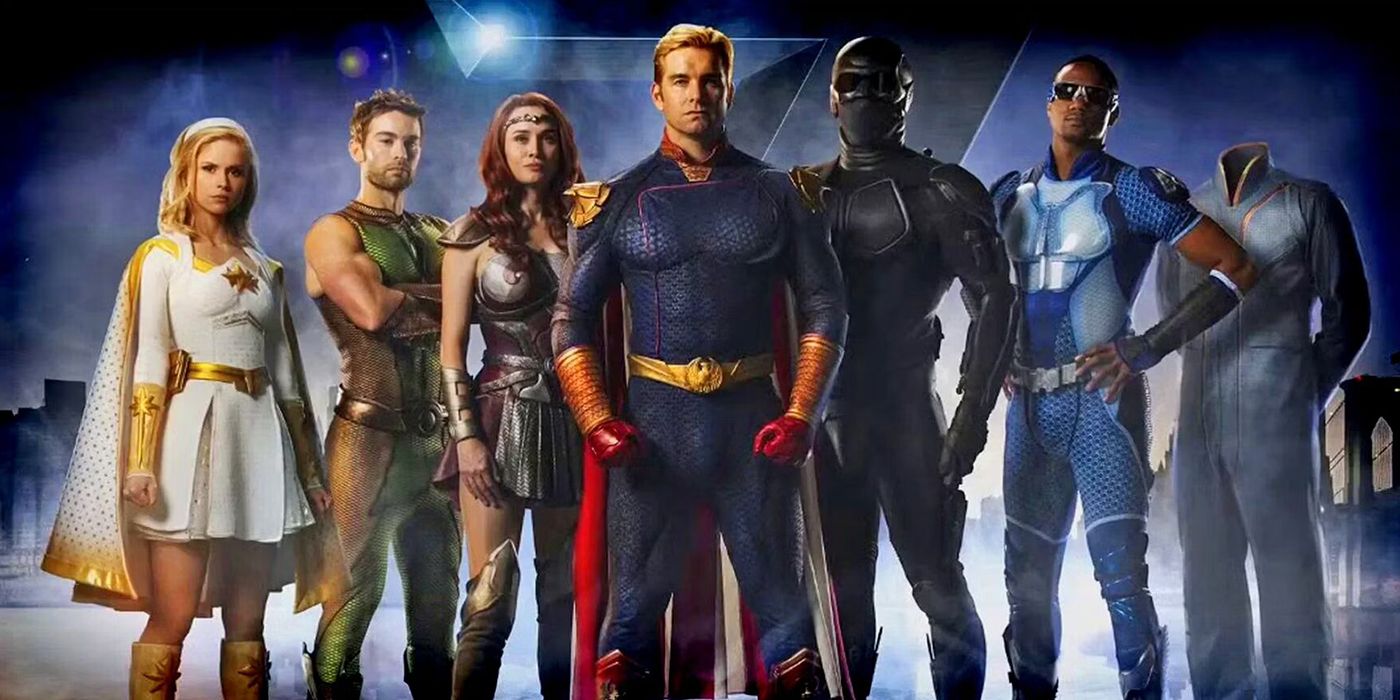
While Vought may parody Marvel to some extent, the Seven are a clear play on DC’s famous Justice League. With their formal sit-down meetings, national celebrity status, and individual superhero likenesses, the Seven have far more in common with DC’s premier superhero team than other groups, such as the Avengers. The similarities continue in the comic books, where the Seven operate from a skybase instead of a regular skyscraper, somewhat akin to the Justice League’s Watchtower space station.
In addition to parodying the Justice League in general, The Boys season 2 also included a more direct jab at the drama surrounding Zack Snyder’s departure from 2017’s Justice League and his replacement with Joss Whedon. During a scene in which Maeve tries to confront Homelander about her discomfort with some of the dialogue in their new film, Dawn of the Seven, Homelander reacts with the line “This new Joss rewrite really sings, huh?” which is a reference to Whedon’s rewrites of Justice League and the ensuing movement to release the Snyder cut.
This moment also alludes to Gal Gadot’s refusal to film a Whedon scene from Justice League that she took issue with. It’s one of the most direct parodies of real-life Marvel/DC movie culture that The Boys pokes fun at.
